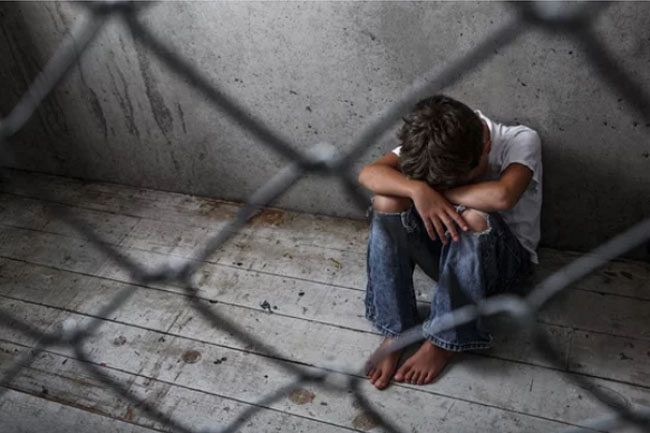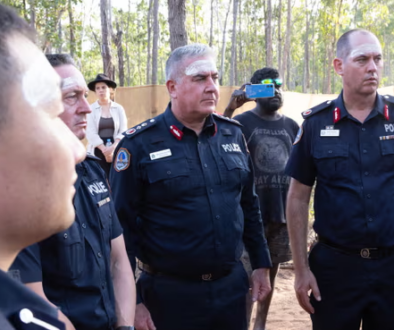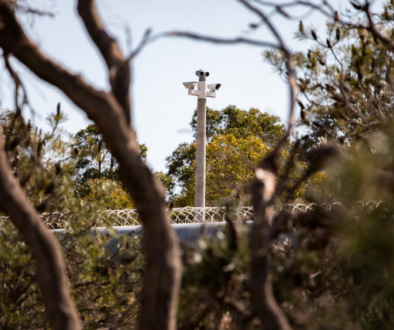
Banksia Hill nightmare highlights urgent need for prison reform
Originally published on independentaustralia.net written by Gerry Georgatos
Western Australia’s Banksia Hill children’s prison is an example of a failed rehabilitation system for incarcerated youth, writes Gerry Georgatos.
WHEN I THINK of Banksia Hill children’s prison, I wish I could speak of prayer. I only see despair.
I find myself writing again of our most vulnerable children, those of Banksia Hill Juvenile Detention Centre — which I describe as a holding pen, a corral of human misery, an abomination.
West Australia’s most vulnerable regional children are gaoled at Banksia Hill. Many of them are uprooted from around the state and may spend months, thousands of kilometres from home.
Some critics, including parliamentarians, believe that criminal offending is deserving of carceral punishments.
Half the gaoled children of Banksia have been removed by the state from their families or carers. Their “parents” are now the state. Many of these children were born into disadvantages and sufferings unimaginable to most household Australians.
Of the remaining children, the majority have, at best, weak safety nets. One or both of their parents are dead or in gaol. The extended families which may care for them are exhausted and unsupported, caring for far too many children society, in general, has betrayed.
These children have it worse than did their parents and if these children are left likewise unsupported, their children come the day will have it even worse — harrowed lives, reprehension daily.
When will our governments and the instruments of the state speak of compassion, love, understanding and fairness? When will they speak of nurture, the restorative and therapeutic?
It is my experience the aberrances of these children are cries for help or worse, cold surrender.
It is not enough to just argue to raise the age of “criminal responsibility” — this is a given. We must vest in the ways forward, to save these children, improve their lot, validate them, believe in them till they believe in themselves and change the direction of their life’s course. We must ensure they do not languish lifelong in ruination, in adult gaols and die decades before their time.
There are those who believe the nightmare of Banksia Hill is a combustion of aberrant First Nations youth. I reject this. Banksia Hill is not a Black problem. For the record, the tragedies and travesties of Banksia Hill are not Black, Brown or White problems. Banksia is a systemic problem. A problem made by governments.
There is nothing restorative, rehabilitative, therapeutic or transformational at Banksia. The disproportionality of First Nations children gaoled should not define and disguise the failure of the state as a Black problem. Homelessness is caused by governments not building social housing. Similarly, the WA Government does not invest in the nurture of our state’s most vulnerable children. We were not put on this Earth to betray our most vulnerable children.
If there were genuine diversionary programs for the most seriously vulnerable children – many of who are homeless, transient or orphaned – the Children’s Court would be referring children to such programs. Governments boast of mythical diversionary programs but come the day aberrant children front the Children’s Court, judges have nowhere to turn them to. Where’s the love? Where’s the humanity?
Where children can be released, we must vest support via intensive outreach, often of psychosocial and psycho-educative content, but these models do not exist in WA — nor Australia-wide. But everything is always worse for the impoverished in West Australia than anywhere else on this continent.
Where children can be bailed, well-resourced community-based facilities must exist and be accessible.
Where children need to be remanded to secure facilities, they must be tiered by age bracket — ten to 12 years, 13 and 14, 15 and 16, 17 and 18. In general, the content of nurture is age-sensitive. These secure facilities must be places where one-on-one support is guaranteed, of equivalencies to “familial” settings. The one-on-one support must be delivered by seasoned expertise where rapport and resonance are core, and the love can be spread with salt-of-the-earth approaches.
Banksia Hill children’s prison must be closed. There must be the abolition of child prisons.
WA needs to urgently reform child bail laws and present more options for children to remain with families where possible, or for them to be with identifiable responsible adults — and/or invest in safety nets where there are substantive outreach supports, mentors and local secure psychosocial community-based facilities.
@GerryGeorgatos explains why hundreds of former Banksia Hill detainees plan to launch a class action over alleged mistreatment pic.twitter.com/cgQXzp5BFy
— Aaron Fernandes (@az_journalist) August 30, 2021
I am the person responsible for galvanising the class action on behalf of former and present detainees — plaintiffs. Testimonies to me and my colleagues, Megan Krakouer and my law student daughter, Connie, from hundreds of former and recently released Banksia detainees describe the same fails and horrors.
Because these forgotten children of Banksia are failed, about 70 per cent will finish up incarcerated as adults.
The children of Banksia who are segregated at WA’s notorious maximum security adult gaol, Casuarina, I estimate will be nearly all incarcerated when adults.
Not everyone in the Departments of Justice and Corrective Services agrees with each other. One high-level manager of youth prisoners was shuffled to another role because he baulked at relocating one in five of the Banksia detainees to Casuarina.
There is personnel who share with me their concerns — and who support the light we have shone on Banksia.
I am haunted by the suicides of 18 and 19-year-old former Banksia detainees who finished up on the avoidable train wreck journey to adult gaols.
The Banksia experience generally diminishes children to the worst of themselves, fast-tracking disaster. Some pay with their lives — suicide, grievous misadventure, drugs and unnatural deaths.
A successful win in the court would ultimately compel governments to humane ways forward instead of a children’s prison, to a plethora of reforms and to a firmament of social care systems and supports. Why does it have to be this way? Why do we have to sue for clear-minded ways forward?
We’ve registered more than 500 souls, with thousands more to come by the time of a court ruling. Hundreds of testimonies describing much the same goes to corroboration, the heart and soul of evidence.
I want to see adequate compensation for each of the affected to have a better chance at a good life. I want to see the unfairnesses of life many were born into, addressed by some life-changing compensation – and by the imperative of validations of what they have been through – unsupported till now.
I believe the class action – the biggest of its type ever – will be historic. I have Parkinson’s Disease and I’m battling, but the calling to do away with children’s prisons is worth every particle of strength left in me.
If we win in the courts, precedents will be set for changes and reforms not just in WA, but which can be tapped into by every state and territory because we shone the light on Banksia Hill.
We must not give up. We must fight like never before for these children.
Most outreach services ceased during the hard border lockdown in March 2020, with residents required to isolate in their homes. All outreach services to Banksia pulled the pin.
For years, I begged state governments to allow high calibre, wide-remit restorative models into Banksia. I won the support of former Minister for Corrective Services, Fran Logan, but the battle to get us in was arduous. Mr Logan retired prior to last year’s Election.
However, when outreach services ceased at Banksia, (then) Department of Corrective Services commissioners summoned me and a colleague, Megan Krakouer, to Banksia. We began immediately.
The next morning, I said to Megan and to my then 20-year-old daughter Connie: “We may never get this opportunity again, so let us do everything we can to assist as many children as possible.”
We focused on the female detainees, aged 11 to 18. When we commenced at Banksia, the female detainee population was 18. I applied to the Children’s Court to release as many as possible and it did. We provided substantive post-release support. Within eight weeks, we had more than halved the female detainee population to seven detainees. We aren’t miracle workers. We were there for them.
Eight weeks and our time was up. We were not as needed with quarantining relaxed and services returning. We had taken it upon ourselves to set a demonstrative example of what works. We showed what psychosocial and restorative support looks like.
The children of Banksia need one-on-one support — intense psychosocial and psycho-educative transformational models must be crafted around one-on-one support and nurture. If Banksia has a detainee population of 100, then deploy 100 nurturers and you will not have children returning dozens of times.
After all this spotlight on Banksia Hill that we have shone, the class action too, we will not sit idly by and watch funding and responsibilities misdirected to carpetbaggers – snouts in the trough – and false claims they will help the children. We need seasoned expertise, not the failed repeat failure.
Leadership is at the heart of success or failure. Governments often appoint the subservient to head bastions that should be truly independent. We must have experts and doers heading state commissions and departments, not “lesser” people favourable to the government of the day.
I imagine a Western Australia with a human rights commissioner, inaugurally with Dr Hannah McGlade — lawyer, academic, connected with the vulnerable, a wide-remit expert. I imagine a Western Australia where Megan Krakouer is the director-general of the Department of Communities and under her conscionable leadership, vulnerable families are supported.
I imagine a Western Australia where someone like me, a restorative justice testator, heads the Mental Health Commission or the Department of Justice and we change lives, save lives, like never before.
If we remain without systems reform, the vulnerable will continue to be left behind. The right type of systems reform comes only from the right type of leadership.
Gerry Georgatos is a suicide prevention and poverty researcher with an experiential focus. He is the national coordinator of the National Suicide Prevention & Trauma Recovery Project (NSPTRP). You can follow Gerry on Twitter @GerryGeorgatos.

Banksia Hill nightmare highlights urgent need for prison reform
Originally published on independentaustralia.net written by Gerry Georgatos
Western Australia’s Banksia Hill children’s prison is an example of a failed rehabilitation system for incarcerated youth, writes Gerry Georgatos.
WHEN I THINK of Banksia Hill children’s prison, I wish I could speak of prayer. I only see despair.
I find myself writing again of our most vulnerable children, those of Banksia Hill Juvenile Detention Centre — which I describe as a holding pen, a corral of human misery, an abomination.
West Australia’s most vulnerable regional children are gaoled at Banksia Hill. Many of them are uprooted from around the state and may spend months, thousands of kilometres from home.
Some critics, including parliamentarians, believe that criminal offending is deserving of carceral punishments.
Half the gaoled children of Banksia have been removed by the state from their families or carers. Their “parents” are now the state. Many of these children were born into disadvantages and sufferings unimaginable to most household Australians.
Of the remaining children, the majority have, at best, weak safety nets. One or both of their parents are dead or in gaol. The extended families which may care for them are exhausted and unsupported, caring for far too many children society, in general, has betrayed.
These children have it worse than did their parents and if these children are left likewise unsupported, their children come the day will have it even worse — harrowed lives, reprehension daily.
When will our governments and the instruments of the state speak of compassion, love, understanding and fairness? When will they speak of nurture, the restorative and therapeutic?
It is my experience the aberrances of these children are cries for help or worse, cold surrender.
It is not enough to just argue to raise the age of “criminal responsibility” — this is a given. We must vest in the ways forward, to save these children, improve their lot, validate them, believe in them till they believe in themselves and change the direction of their life’s course. We must ensure they do not languish lifelong in ruination, in adult gaols and die decades before their time.
There are those who believe the nightmare of Banksia Hill is a combustion of aberrant First Nations youth. I reject this. Banksia Hill is not a Black problem. For the record, the tragedies and travesties of Banksia Hill are not Black, Brown or White problems. Banksia is a systemic problem. A problem made by governments.
There is nothing restorative, rehabilitative, therapeutic or transformational at Banksia. The disproportionality of First Nations children gaoled should not define and disguise the failure of the state as a Black problem. Homelessness is caused by governments not building social housing. Similarly, the WA Government does not invest in the nurture of our state’s most vulnerable children. We were not put on this Earth to betray our most vulnerable children.
If there were genuine diversionary programs for the most seriously vulnerable children – many of who are homeless, transient or orphaned – the Children’s Court would be referring children to such programs. Governments boast of mythical diversionary programs but come the day aberrant children front the Children’s Court, judges have nowhere to turn them to. Where’s the love? Where’s the humanity?
Where children can be released, we must vest support via intensive outreach, often of psychosocial and psycho-educative content, but these models do not exist in WA — nor Australia-wide. But everything is always worse for the impoverished in West Australia than anywhere else on this continent.
Where children can be bailed, well-resourced community-based facilities must exist and be accessible.
Where children need to be remanded to secure facilities, they must be tiered by age bracket — ten to 12 years, 13 and 14, 15 and 16, 17 and 18. In general, the content of nurture is age-sensitive. These secure facilities must be places where one-on-one support is guaranteed, of equivalencies to “familial” settings. The one-on-one support must be delivered by seasoned expertise where rapport and resonance are core, and the love can be spread with salt-of-the-earth approaches.
Banksia Hill children’s prison must be closed. There must be the abolition of child prisons.
WA needs to urgently reform child bail laws and present more options for children to remain with families where possible, or for them to be with identifiable responsible adults — and/or invest in safety nets where there are substantive outreach supports, mentors and local secure psychosocial community-based facilities.
@GerryGeorgatos explains why hundreds of former Banksia Hill detainees plan to launch a class action over alleged mistreatment pic.twitter.com/cgQXzp5BFy
— Aaron Fernandes (@az_journalist) August 30, 2021
I am the person responsible for galvanising the class action on behalf of former and present detainees — plaintiffs. Testimonies to me and my colleagues, Megan Krakouer and my law student daughter, Connie, from hundreds of former and recently released Banksia detainees describe the same fails and horrors.
Because these forgotten children of Banksia are failed, about 70 per cent will finish up incarcerated as adults.
The children of Banksia who are segregated at WA’s notorious maximum security adult gaol, Casuarina, I estimate will be nearly all incarcerated when adults.
Not everyone in the Departments of Justice and Corrective Services agrees with each other. One high-level manager of youth prisoners was shuffled to another role because he baulked at relocating one in five of the Banksia detainees to Casuarina.
There is personnel who share with me their concerns — and who support the light we have shone on Banksia.
I am haunted by the suicides of 18 and 19-year-old former Banksia detainees who finished up on the avoidable train wreck journey to adult gaols.
The Banksia experience generally diminishes children to the worst of themselves, fast-tracking disaster. Some pay with their lives — suicide, grievous misadventure, drugs and unnatural deaths.
A successful win in the court would ultimately compel governments to humane ways forward instead of a children’s prison, to a plethora of reforms and to a firmament of social care systems and supports. Why does it have to be this way? Why do we have to sue for clear-minded ways forward?
We’ve registered more than 500 souls, with thousands more to come by the time of a court ruling. Hundreds of testimonies describing much the same goes to corroboration, the heart and soul of evidence.
I want to see adequate compensation for each of the affected to have a better chance at a good life. I want to see the unfairnesses of life many were born into, addressed by some life-changing compensation – and by the imperative of validations of what they have been through – unsupported till now.
I believe the class action – the biggest of its type ever – will be historic. I have Parkinson’s Disease and I’m battling, but the calling to do away with children’s prisons is worth every particle of strength left in me.
If we win in the courts, precedents will be set for changes and reforms not just in WA, but which can be tapped into by every state and territory because we shone the light on Banksia Hill.
We must not give up. We must fight like never before for these children.
Most outreach services ceased during the hard border lockdown in March 2020, with residents required to isolate in their homes. All outreach services to Banksia pulled the pin.
For years, I begged state governments to allow high calibre, wide-remit restorative models into Banksia. I won the support of former Minister for Corrective Services, Fran Logan, but the battle to get us in was arduous. Mr Logan retired prior to last year’s Election.
However, when outreach services ceased at Banksia, (then) Department of Corrective Services commissioners summoned me and a colleague, Megan Krakouer, to Banksia. We began immediately.
The next morning, I said to Megan and to my then 20-year-old daughter Connie: “We may never get this opportunity again, so let us do everything we can to assist as many children as possible.”
We focused on the female detainees, aged 11 to 18. When we commenced at Banksia, the female detainee population was 18. I applied to the Children’s Court to release as many as possible and it did. We provided substantive post-release support. Within eight weeks, we had more than halved the female detainee population to seven detainees. We aren’t miracle workers. We were there for them.
Eight weeks and our time was up. We were not as needed with quarantining relaxed and services returning. We had taken it upon ourselves to set a demonstrative example of what works. We showed what psychosocial and restorative support looks like.
The children of Banksia need one-on-one support — intense psychosocial and psycho-educative transformational models must be crafted around one-on-one support and nurture. If Banksia has a detainee population of 100, then deploy 100 nurturers and you will not have children returning dozens of times.
After all this spotlight on Banksia Hill that we have shone, the class action too, we will not sit idly by and watch funding and responsibilities misdirected to carpetbaggers – snouts in the trough – and false claims they will help the children. We need seasoned expertise, not the failed repeat failure.
Leadership is at the heart of success or failure. Governments often appoint the subservient to head bastions that should be truly independent. We must have experts and doers heading state commissions and departments, not “lesser” people favourable to the government of the day.
I imagine a Western Australia with a human rights commissioner, inaugurally with Dr Hannah McGlade — lawyer, academic, connected with the vulnerable, a wide-remit expert. I imagine a Western Australia where Megan Krakouer is the director-general of the Department of Communities and under her conscionable leadership, vulnerable families are supported.
I imagine a Western Australia where someone like me, a restorative justice testator, heads the Mental Health Commission or the Department of Justice and we change lives, save lives, like never before.
If we remain without systems reform, the vulnerable will continue to be left behind. The right type of systems reform comes only from the right type of leadership.



